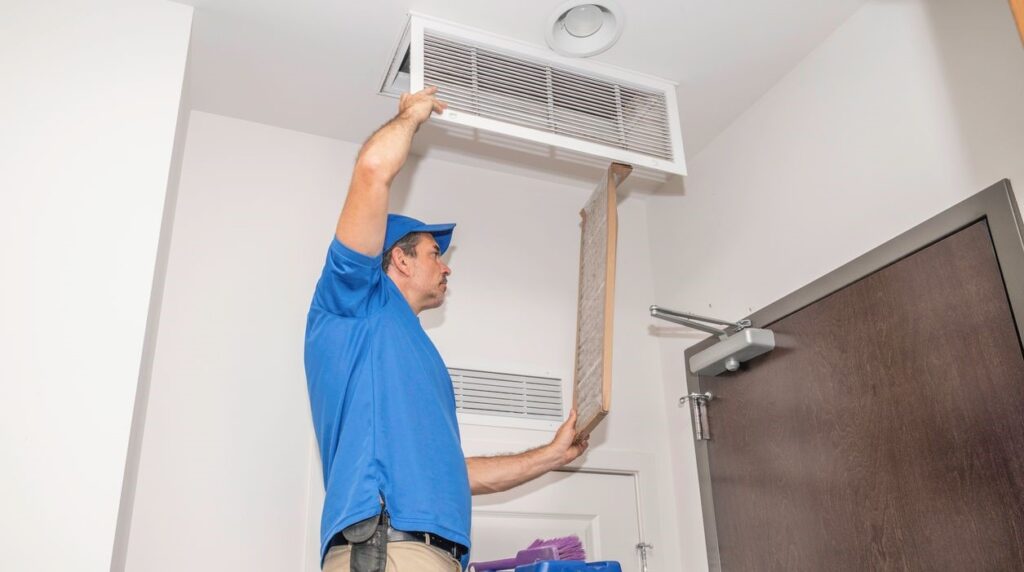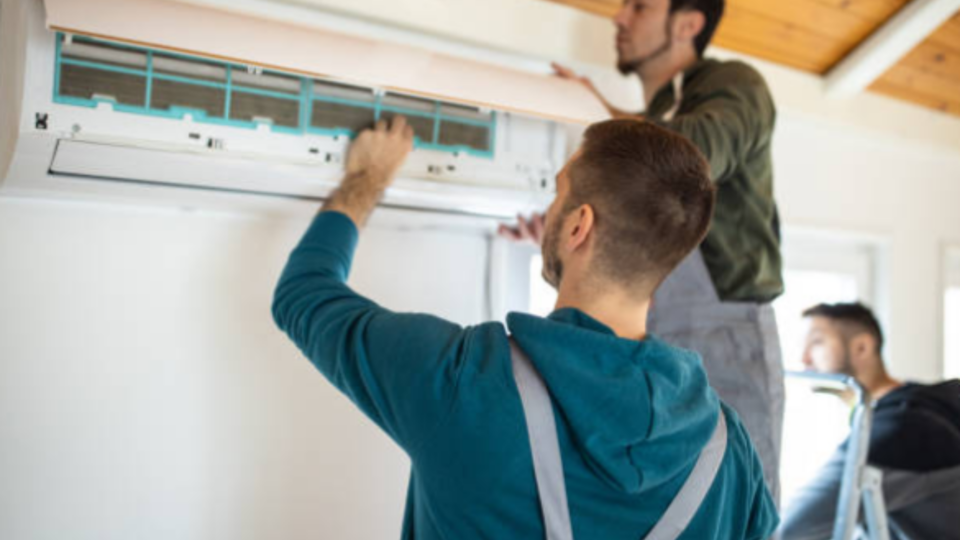In many homes and businesses, the presence of mold in HVAC systems can be a significant concern. Not only does mold affect the efficiency of the heating and cooling systems, but it also poses health risks to the occupants. Understanding the causes and implications of mold within these systems is crucial for maintaining a healthy and comfortable indoor environment.

Understanding Mold Growth in HVAC Systems
Mold thrives in moist environments, and HVAC systems can provide the perfect breeding ground. The combination of dust, humidity, and darkness within the ducts creates an ideal setting for mold spores to flourish. Moisture accumulation, often resulting from condensation, is a primary factor contributing to mold growth in these systems.
How Does Mold Enter HVAC Systems?
Mold spores can enter HVAC systems in various ways. They can be drawn in from the outside air or brought in through open windows and doors. Once inside, these spores settle in the dust and debris that accumulate in the ducts, where they begin to grow if the conditions are right.
Common Causes of Mold in HVAC Systems
1. Poor Ventilation
One of the leading causes of mold growth is inadequate ventilation. Without proper airflow, moisture can become trapped in the system, creating an environment conducive to mold.
2. Lack of Regular Maintenance
Neglecting regular maintenance of HVAC systems can lead to the buildup of dirt and debris, which can retain moisture and support mold growth. Regular inspections and cleanings are essential to prevent this.
3. High Humidity Levels
Homes and businesses located in areas with high humidity are at a greater risk for mold growth. Keeping indoor humidity levels below 50% can help mitigate this risk.
The Impact of Mold on Indoor Air Quality
Mold in HVAC systems can significantly impact indoor air quality. As mold spores circulate through the air, they can cause allergic reactions and respiratory issues in sensitive individuals. It’s essential to address mold problems promptly to prevent health complications.
Health Risks Associated with Mold
Exposure to mold spores can lead to a range of health issues, including sneezing, coughing, skin rashes, and even more severe respiratory conditions like asthma attacks. People with existing health conditions, children, and the elderly are particularly vulnerable.
Preventing Mold Growth in HVAC Systems
Regular Maintenance and Cleaning
Routine maintenance is key to preventing mold in HVAC systems. Regularly changing air filters and scheduling professional cleanings can help keep the system free of mold and other contaminants.
Controlling Humidity Levels
Using dehumidifiers and ensuring proper ventilation can help maintain optimal humidity levels, reducing the likelihood of mold growth.
Inspecting and Repairing Leaks
Regular inspections for leaks in the HVAC system, as well as in the structure of the building, can prevent moisture buildup and subsequent mold growth.
Identifying Mold in HVAC Systems
Detecting mold in an HVAC system can be challenging. Common signs include a musty odor, visible mold growth around vents, and increased allergy symptoms among occupants. If you suspect mold, it’s essential to have the system inspected by a professional.
Professional Mold Testing
Professional testing can confirm the presence of mold and identify the specific types of mold present. This information is vital for determining the necessary remediation steps.
Remediation and Cleaning
If mold is detected in an HVAC system, professional cleaning is often required. This process involves removing mold from the ducts and other components and ensuring that the entire system is free of mold spores.
Choosing a Professional Service
When selecting a service for mold remediation, ensure they have experience and certification in dealing with HVAC systems. A reputable service will provide a comprehensive plan for mold removal and prevention.
Maintaining a Mold-Free HVAC System
Once mold is removed, ongoing maintenance is crucial to prevent its return. Regular inspections, cleaning, and monitoring of humidity levels will help maintain a healthy HVAC system.
DIY Maintenance Tips
Homeowners and business owners can take steps to maintain a mold-free HVAC system by regularly changing air filters, keeping vents open for proper airflow, and using dehumidifiers during humid months.
Conclusion
Mold in HVAC systems is a common issue that can have serious implications for indoor air quality and health. By understanding the causes of mold, taking preventive measures, and maintaining regular cleaning schedules, homeowners and business owners can ensure a safe and comfortable environment.

FAQ
What are the signs of mold in HVAC systems?
Signs include a musty odor, visible mold growth, and increased allergy symptoms.
How can I prevent mold in my HVAC system?
Regular maintenance, controlling humidity, and inspecting for leaks can help prevent mold growth.
Is mold in HVAC systems dangerous?
Yes, mold can cause health issues, especially for individuals with allergies or respiratory conditions.
For more detailed information, you can visit this guide on fixing musty odors from air conditioners.
Additionally, you might find this symptoms guide helpful in identifying issues in your HVAC system.
This article contains affiliate links. We may earn a commission at no extra cost to you.